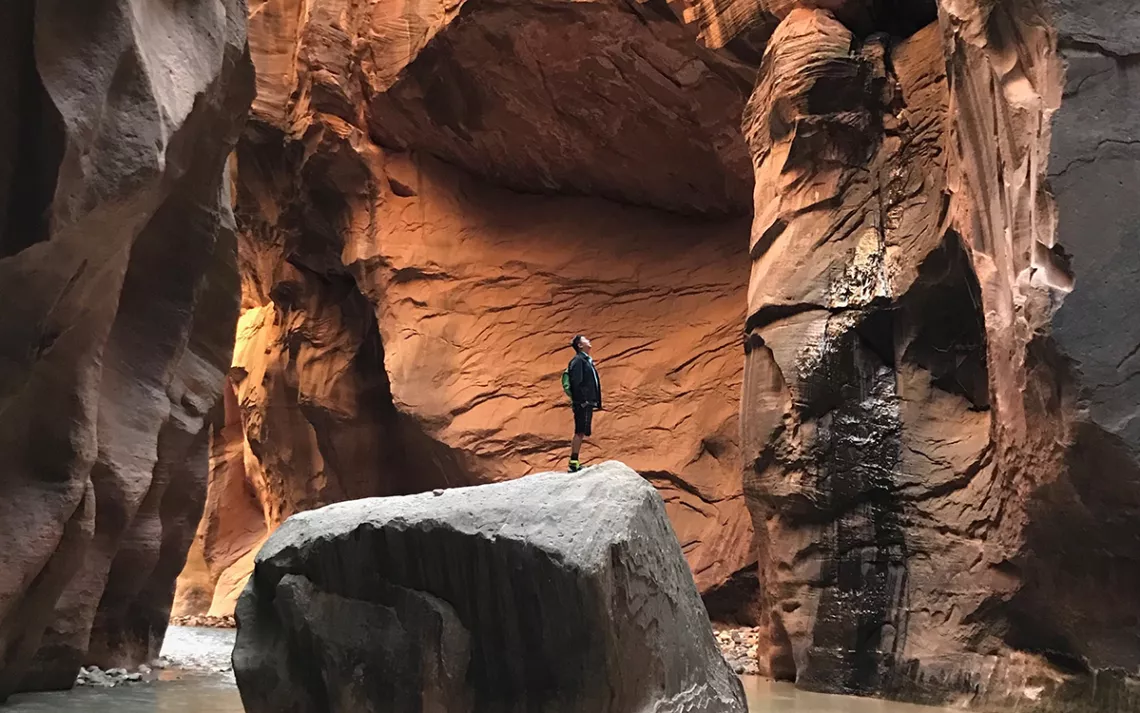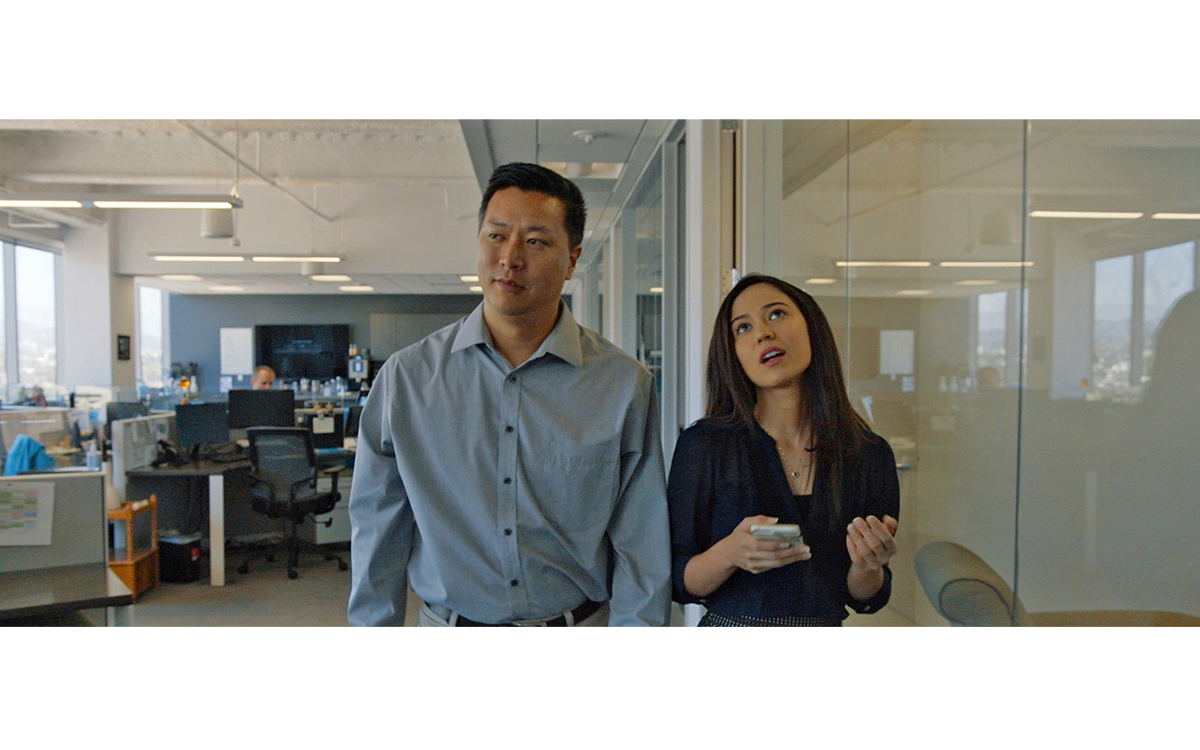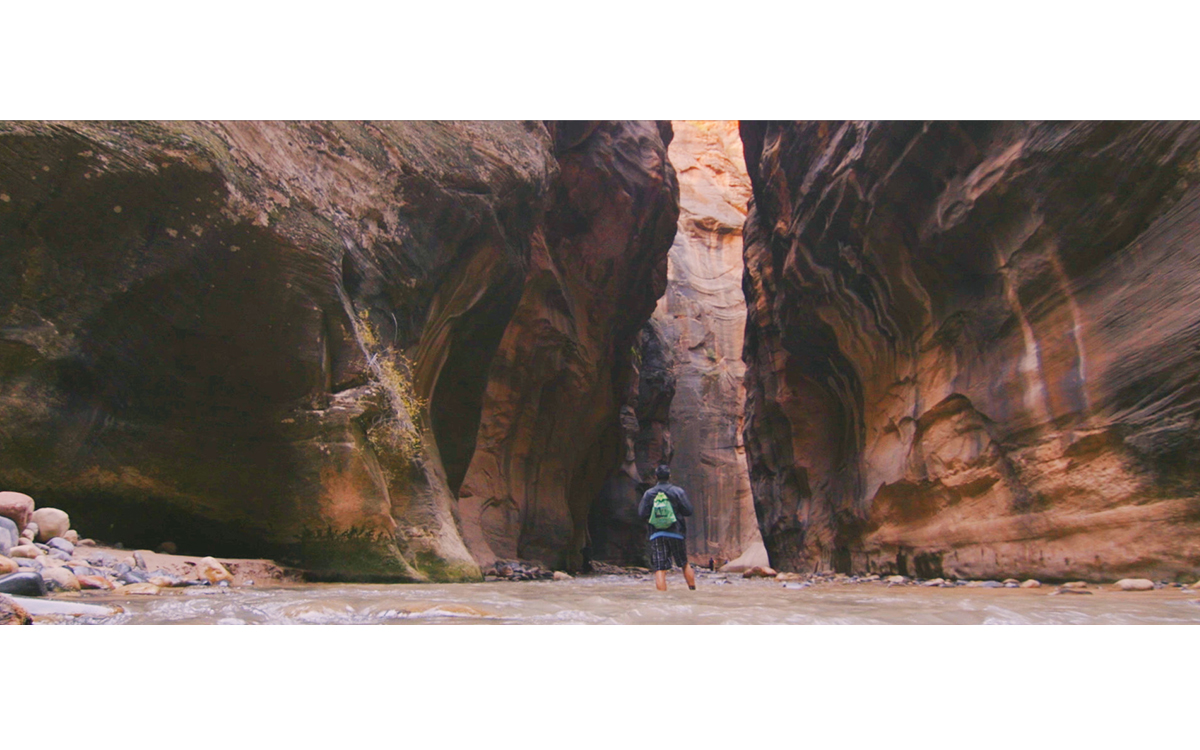How to Get Moviegoers Outside
This was the whole point of Tom Huang’s “Find Me”

Photos courtesy of Tom Huang
The big idea came when Tom Huang, the Los Angeles–based director of the indie adventure film Find Me, was hiking the Narrows in Zion National Park. "Walking in the river, looking up at the gorgeous, towering canyon walls in amazement, I suddenly thought, ‘Everyone should see something like this,'” he says. "I wanted to make a film where people point at the screen and say, 'I want to go there.'” With nature as his guide, Huang and a cameraman friend set out to make a few short, noncommercial videos they could post online. The idea was to feature easily accessible, wow-worthy hikes that might inspire people to go out for a firsthand nature experience. At the time, Huang was merely seeking a fun, creative project to focus on while waiting for another movie to get funded.
But then, the project got bigger.
“When we looked at the footage, we thought, 'Oh my gosh, this is amazing. We could build a feature around this.'” Inspired, the writer-director—who has penned two other feature films and written for network TV—got to work. With a script in hand, the plan for shooting was hatched: A skeleton crew would shoot roughly three to four days on location each month, docu-style, in addition to scenes with other actors in Los Angeles. One year and less than $150,000 later, they had a rough cut.
Huang devised a storyline many can relate to: A tired office worker named Joe (played by Huang) is stuck in a rut after an unexpected divorce. He lives on autopilot, solidly affixed in ho-hum mode, circling around the same uninspiring spheres: his soul-sucking accounting office, his aging (and grumpy) parents' home, the saggy living room couch where he passes out watching TV every night, and behind the wheel, driving around his screen-addled kid. Audiences glean glimpses of Joe’s discontent when his bubbly coworker and confidant, Amelia (played by Sara Amini), raves about her outdoor adventuring over their lunch breaks, attempting to prod and tease Joe out of his predictable ways. Of course, habits die hard, and it isn’t until Amelia goes missing, leaving behind a series of mysterious clues as to her whereabouts, that Joe steps out of his comfortable but passionless existence. Her clues lead him to superlative sites, including Yosemite, Death Valley, and Zion National Parks.

Upbeat, quirky, and highly engaging, Find Me is infused with humor, intrigue, and, of course, stunning footage of three Western treasures sure to end up on many viewers’ bucket lists. This was all part of Huang’s goal—to inspire people to go out and see the natural wonders in our midst.
Through Joe, Huang reveals patterns many of us fall into—choosing comfort over adventure, discovery, and growth. Huang says, "For a lot of people, they see these pictures on social media or the Discovery Channel, or watch Free Solo and think, ‘Wow, that’s so great!' and yet they still don’t go out and do it. Something blocks them. For some people it’s culture, or it’s too much to take that first step. For some it’s socioeconomic. But whatever it is for each person, there is a desire for the outdoors—they just think there are impediments.”
So, how to inspire the Joes of the world? How to nudge the unsure, the uninitiated, the unmotivated to action? Tom’s plan was to inspire through three breath-taking hikes—and to be strategic about which ones to showcase. They had to be “easy adventures,” relatively flat and nontechnical and no lengthier than three miles one way, and they had to end with “something amazing.” It’s how he curated Crocker Point in Yosemite, Sidewinder Canyon in Death Valley, and Zion’s Narrows.
The combination of low-risk, high-payout nature experiences with skillful cinematography and a compelling story has already moved audiences to seek out their own adventures. After Find Me was recently released to a wider audience on Amazon, Huang started getting letters and messages from viewers thanking him for the motivation. One such message came via an Instagram post from Jerry, who wrote, “Love this movie. As a cancer patient, I watched it during treatment. Got so motivated I drove from SoCal to experience the buffalos of Yellowstone, the garden at spires of Bryce, and the swirling rocks of Zion (I’ll get to the Narrows next time). Got a photo for myself to remind me of the film and my trip and something I’ll have to motivate me in chemo infusion next time. Very motivating to me and others on the infusion floor.”
As a filmmaker, Huang does for audiences what Amelia does for Joe—creating a kind of soft-entry road map to outdoor adventuring. However, in an age in which media coverage has the power to create unintended mob scenes (see: wildflower preserve mayhem resulting from Southern California’s highly Instagrammable super bloom earlier this year), Find Me raises the question of nature evangelism, which has the potential to ruin the very beauty that makes these places special. It’s something Huang thinks about often, but wasn’t initially prepared for.

“I never thought the film would become this big,” he says. He did, however, intentionally choose to feature national parks, given that they are curated places with the infrastructure to handle crowds. And all along, the benefit of inspiring audiences to get outside, Huang says, outweighed any unintended consequences. “I think being able to be alone (or relatively alone) with something beautiful that nature has created, like the places in the film, can really have a transformative effect that's unexplainable. Just going to a national park, parking somewhere, and getting out and hiking a bit is life-affirming, and I think if everyone could do that, this world would be a better place.” Huang also believes exposure to the national park system helps audiences understand why these wild places need to be conserved, especially in the current political climate.
While Find Me contains a few predictable hallmarks of an indie movie—a miscast actor, a soundtrack song that doesn't quite match the feeling of a moment—both the story and performances are powerful and infectious. But the real stars of Find Me are the trails of the parks themselves—siren songs for the uninitiated and validation for nature devotees. The film is a celebration of the “easy adventures” and “awesome endings” awaiting within miraculous places that deserve our attention, our respect, our conservation, and at the very least, a visit.
 The Magazine of The Sierra Club
The Magazine of The Sierra Club



